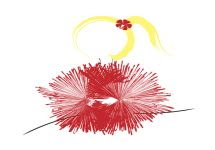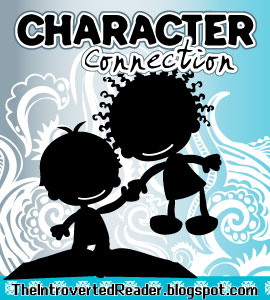
I do not write many negative book reviews. This is not because I don’t have strong opinions (I think that Jess over at
Desperado Penguin, who also just happened to be the maid-of-honor at my wedding, will back me up on this—remember what became of the tropical flowers, Jess?). Rather, it’s because leisure reading is a gift I give myself, and I rarely stick with a book that I’m not enjoying.
So what to make of my mixed feelings about Monica Ali’s
In the Kitchen? It has lots of elements I like in a novel – skillful use of language, food-related story, quirky characters, multicultural vibe. I didn’t give up on it. But I can’t really say that I liked it in the end. It was very promising, so I stuck with it, stuck with it, and then – not so much in the gratification department. Hmmm.
Maybe it’s because I – like the author, I think – didn’t ever warm up to the main character, Gabriel Lightfoot, a solid but uninspired chef, bitterly watching food celebrities set London’s culinary agenda. As Gabe surveys his life, this is what he sees:
You couldn’t go around tearing basil leaves and swooning with pleasure all day. He had no debts, he wasn’t an alcoholic, he didn’t take drugs, he didn’t live on sugar sandwiches and Coke, and he had come this far without bankruptcy, coronaries, divorce, or psychotic breaks. Looking sideways (for what man is strong enough to resist?), he could say that things were not too bad. (iPhone location 1423-1430)
Sadly, what Gabe fails to realize is that he’s committed no major screw ups because he’s followed no great passions. You have to try to fail, and Gabe refuses to try. No guts, no glory; no rain, no rainbows. I found it impossible to like a character who defined himself by what he
wasn't.
Gabe is caught between Old Britain, represented by his father, a retired textile worker, and New Britain, represented by the crew of the upscale, hotel-based kitchen he runs, but he doesn’t really seem to embrace either world. His personal life, in the form of a long-suffering girlfriend, is on hold while he waits for his “big break,” the financing of his own restaurant by a mercenary pair of backers: a self-made millionaire and a semi-shady MP. Playing it safely seems to have gotten him just where he wants to be, when the accidental death of a kitchen worker sends a ripple through the pond of his well ordered life that disrupts all his plans by exposing his carefully concealed weaknesses.
Sounds good so far, right? And it should be. But the characters never developed in a way that made me care about them. The back story, especially the part involving his parents’ relationship, developed too slowly. Ali certainly did her homework, but the minutia of mills and even kitchens dragged on far too long for my taste. Gabe is a lousy son, a lousy uncle, a lousy boyfriend, a lousy restaurateur, and even a lousy paramour. So when Ali finally clued me in on the abrupt devolution of his mental state, I just didn’t have enough invested in the character to feel much sympathy for him. I guess that’s why I felt so oddly deflated when I was finished reading the book: not angry, not sad, just empty.
I think others with more patience might enjoy this book far more than I did. Ali can really pack a sentence with meaning, which is one of the reasons I kept on reading. I would love to see what she does with a character she really likes, so I would definitely give her work another try. But I can’t really recommend
In the Kitchen to the foodie crowd or the literary fiction crowd without a strong warning: Frustration Ahead! Enter at your own risk.



































